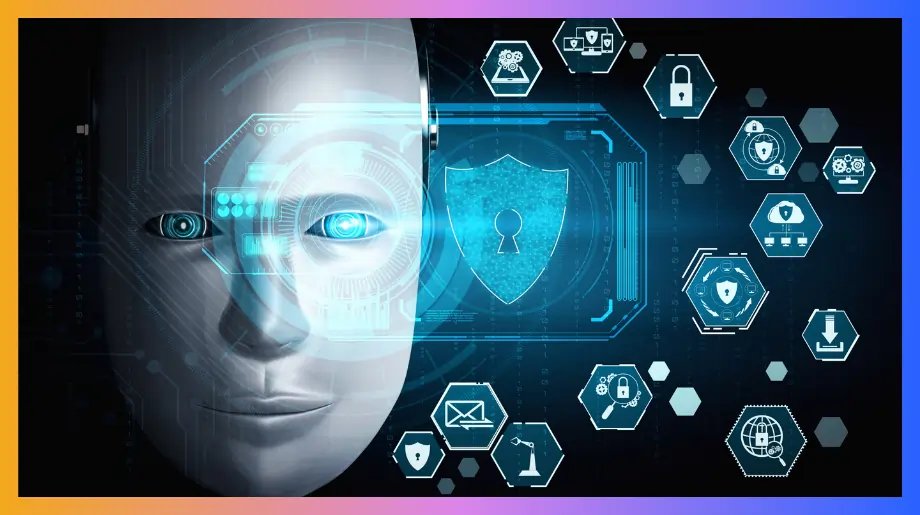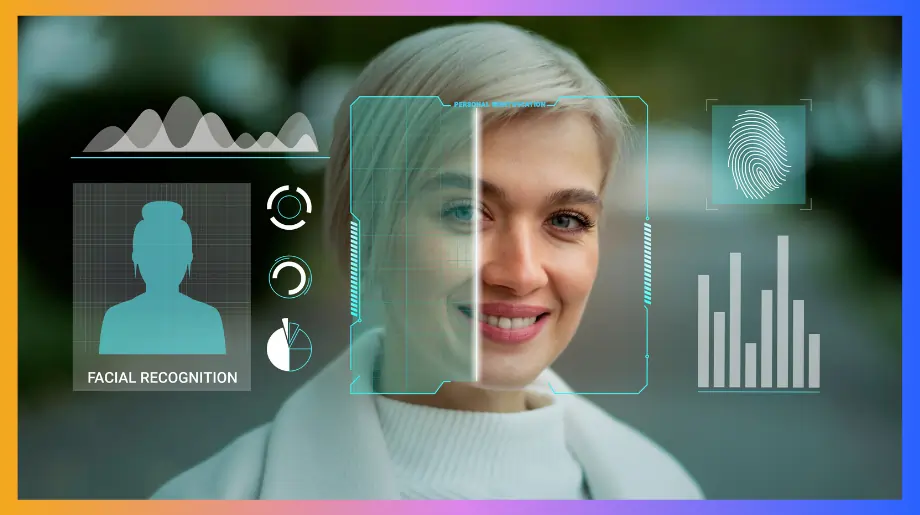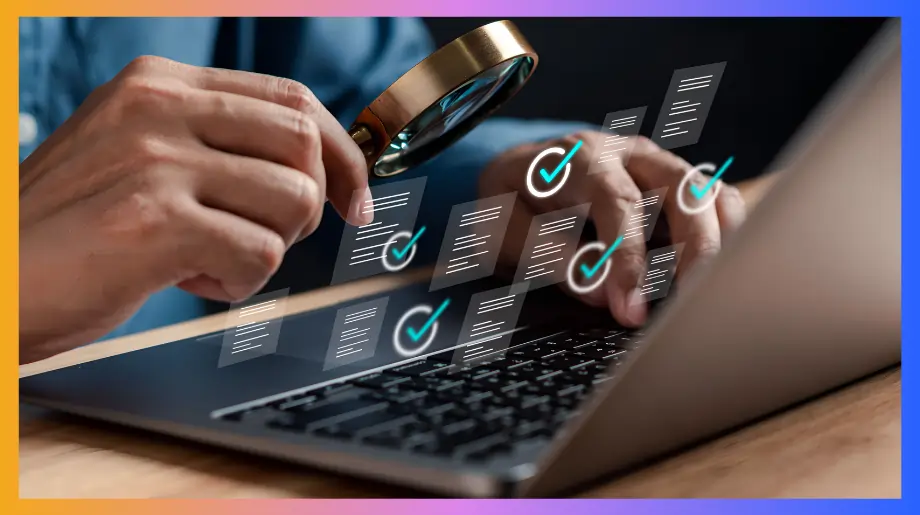Cybersecurity isn't what it used to be. The methods, firewalls, antivirus software, and hoping for the best don't work anymore. Attacks are more sophisticated now. And the cost of failure keeps climbing.
But there's another side to this story. Some companies are experiencing something completely different. They're stopping attacks and detecting threats before they happen.
What's their secret?
Artificial intelligence.
Understanding how AI is used to prevent data breaches in the cloud is now critical. It's the difference between success and failure.
Emerging Cloud Threats & Breaches in 2025
The cybersecurity threats of 2025 are unlike anything we've seen before. Hackers aren't getting more sophisticated anymore. They're using AI against you. This creates a whole new level of danger.
Today's cybercriminals are sophisticated. They use machine learning to build attacks that actually learn from your defenses. These attacks adapt in real-time. They get smarter every time you try to stop them.
The most dangerous threats targeting cloud environments today include:
- Smart Malware. This stuff is scary. AI-powered malware rewrites itself to dodge detection. Your security team can't keep up with how fast it adapts.
- Deepfake Attacks. Hackers create fake videos of your executives. Employees get fooled into transferring money or sharing sensitive data. It's that convincing.
- Advanced Persistent Threats. Groups like BERSERK BEAR hide in your systems for months. They steal data. They're learning your security patterns the whole time.
Financial Impact of These Threats: The numbers are brutal. Breaches cost millions per incident now. Financial institutions? They lose even more per attack. Detection takes 96 hours. Recovery takes 287 days. You're spending a year cleaning up one breach.
The Role of AI in Modern Cloud Security
The whole game has changed. Security isn't about reacting to threats anymore. AI has transformed how you can protect your organization. Instead of waiting for attacks to happen and then rushing to respond, AI helps you stay ahead of hackers.
Traditional security was always reactive. Someone breaks in, the alarm goes off, and the security team rushes in. Fast, but always arriving after the damage started.
AI transforms this approach. It predicts problems before they become disasters.
AI's core security capabilities that make this transformation possible:
- Smart Pattern Learning. AI monitors everything in your systems. It learns what's normal for your environment. We're talking about processing massive amounts of events weekly. When something unusual happens, you know right away.
- Instant Threat Detection. AI processes millions of data points. It catches threats your analysts would miss. False alarms drop. AI understands context better than traditional tools.
- Connected Intelligence. AI connects dots between different security events. It reveals coordinated attacks. It links activities that seem unrelated. This approach improves detection rates.
- Real-Time Decision Making. AI evaluates user behavior, device health, and threat data. It makes instant security decisions. It's accurate and operates at machine speed.
How AI Is Used to Prevent Data Breaches in the Cloud
AI has proven itself as the most effective defense against modern cyber threats. These aren't experimental technologies. They're battle-tested solutions protecting organizations right now.
Real-Time Threat Detection and Automated Response
Your security team can't keep up. They're monitoring thousands of systems and millions of daily events. Human analysts can't process this volume.
Modern AI use cases in cyber security. It focuses on real-time threat detection, predictive analytics, and automated response. While your team sleeps, AI processes millions of events at once.
How AI delivers instant protection through automated systems:
- Instant Threat Recognition. AI monitors your network traffic, user behavior, and system activities. When something unusual happens, it identifies the threat within milliseconds. Detection times drop from 10 months to 10 minutes.
- Automatic Response Execution. AI doesn't wait for human approval. It executes response protocols right away. Compromised systems get isolated. Suspicious credentials are revoked. Hours become minutes.
- Evolutionary Defense Learning. Each attack makes your AI defense system smarter. It updates detection rules based on new threat patterns. Your security defenses become stronger with every encounter.
Predictive Analytics for Proactive Defense
Data breach prevention reaches its peak when you can stop threats before they happen. AI-powered predictive analytics changes everything. Your security goes from reactive to proactive. It identifies vulnerabilities and attack patterns before hackers can exploit them.
Key predictive capabilities that keep you ahead of attackers:
- Vulnerability Impact Forecasting. Machine learning studies your environment. It looks at threat patterns and attack history. It predicts which vulnerabilities hackers will target first. This helps you patch the right things fast. Exposure windows drop by 75%.
- Attack Path Prediction. AI maps how attackers might move through your cloud systems. It finds critical weak points. It recommends controls to block likely attack routes. This prevents lateral movement in 99% of cases.
- Threat Landscape Evolution. Predictive models analyze global threat data. They forecast new attack methods before they spread. You can prepare defenses early. Accuracy rates exceed 94%.
Behavioral Biometrics for Stronger Authentication
Your users' behavioral patterns are as unique as fingerprints. AI learns these patterns and creates invisible continuous authentication. Works without bothering anyone.
How AI creates unbreakable identity verification:
- Continuous Identity Verification. AI analyzes typing patterns, mouse movements, and device interactions. Creates behavioral profiles that verify identity. Workflow stays smooth. 99.7% accuracy.
- Anomaly-Based Access Control. When behavior changes like unusual login times, unfamiliar devices, or strange data access, AI triggers additional authentication. It restricts access temporarily. This prevents data breach attempts through compromised credentials.
- Adaptive Authentication Strength. AI does real-time risk assessment combining behavioral analysis, device trust, and context. Authentication adjusts automatically. Higher security when risk increases. Seamless experience during normal operations.
Identity and Access Risk Scoring
Every identity in your cloud environment carries a different risk. AI helps you understand and manage these risks with precision and automation.
Advanced risk management capabilities that protect your most valuable assets:
- Dynamic Risk Assessment. AI continuously evaluates user risk scores based on access patterns, data sensitivity, peer behavior, and threat intelligence. Real-time risk visibility with 96% accuracy across all users.
- Privilege Optimization. Machine learning analyzes actual resource usage and recommends privilege adjustments. Users maintain least-privilege access. Over-privileged accounts get identified. Excessive permissions drop by 80%.
- Automated Access Reviews. AI conducts intelligent access reviews by analyzing usage patterns, business relationships, and role changes. Identifies inappropriate permissions and recommends fixes. 300% faster than manual processes.
Contextual Threat Intelligence for Cloud Workloads
Your cloud workloads are interconnected in ways you wouldn't believe. Everything's talking to everything else constantly. AI gives you the intelligence you desperately need to protect these chaotic environments.
How AI makes sense of complex cloud environments:
- Workload Relationship Mapping. AI maps how your workloads interact and communicate. It reveals attack paths hackers could use. Shows you where your critical security boundaries are. Works across all your cloud environments.
- Environment-Specific Threat Detection. Machine learning trains on your specific cloud setup. Not generic configurations. It catches threats your regular tools miss. You get tailored protection with fewer false alarms.
- Automated Security Configuration. AI monitors your cloud configurations against best practices. When something's wrong, it fixes it automatically. Critical problems? You'll know within minutes.
How Security Teams Use AI in the Cloud
Your cloud workloads are complex and interconnected. AI gives you the intelligence to protect these dynamic environments effectively.
Core AI capabilities that transform how security teams operate:
- Workload Relationship Mapping. AI maps how your workloads interact and communicate. It shows potential attack paths and security boundaries. Works across all your cloud platforms.
- Environment-Specific Threat Detection. Machine learning trains on your specific setup. It catches threats that generic tools miss. You get tailored protection with fewer false alarms.
- Automated Security Management. AI monitors your configurations against best practices. It fixes issues automatically and alerts you to critical problems within minutes.
- Intelligent Resource Protection. AI identifies your most critical assets and applies enhanced monitoring. It prioritizes protection based on business impact. Your valuable resources get the strongest defense.
Key Considerations Before Implementing AI in Cloud Security
Before you start with AI security, understand what makes it work. These basics decide if you'll succeed or waste money. Get it right, and you'll have a real advantage.
Your AI security system is only as good as the data it gets. Poor data quality creates dangerous blind spots. Attackers will exploit these gaps.
Essential requirements for successful AI security implementation:
- Comprehensive Data Integration. You need data from endpoints, networks, cloud services, identity systems, and threat feeds. Missing pieces create security gaps.
- Data Normalization Standards. Different security tools create data in various formats. You need proper normalization so AI can process everything consistently.
- Real-Time Pipeline Requirements. AI needs continuous, fast data feeds for real-time protection. Delayed data cuts effectiveness significantly.
- Environmental Specificity. Generic AI models won't protect your specific setup effectively. You need models trained on your unique patterns and behaviors.
- Human-AI Collaboration Framework. Keep human oversight for complex decisions while automating routine tasks. Clear escalation procedures prevent over-reliance on automation.
What's Next for AI in Cloud Security
The future of cloud security is happening right now. Prepare for these developments. You'll gain real advantages in security effectiveness and efficiency.
AI is getting incredibly sophisticated. Soon it'll handle most routine security work automatically. You'll only step in for complex stuff.
Revolutionary capabilities that will reshape cloud security:
- Self-Healing Security Infrastructure. Next-generation AI detects, diagnoses, and fixes security issues automatically. Your optimal security posture stays maintained continuously across all environments.
- Adaptive Threat Response. Future AI adjusts your defensive measures based on real-time assessments. Stricter controls during high threat periods. Relaxed restrictions when risk decreases.
- Predictive Security Architecture. AI proactively recommends and implements security changes based on evolving threats and business needs. Your infrastructure stays ahead of emerging challenges.
- Cryptographic Agility Implementation. AI manages your transition to quantum-resistant encryption. It identifies vulnerable implementations automatically. Systematic upgrades without disrupting services.
- Quantum Threat Detection. Advanced AI monitors for quantum advances and potential attacks. Early warning systems help you implement protective measures before threats materialize.
Using Infisign For AI-Powered Access That Protects from Data Breaches
While your competitors discover breaches weeks later, AI-powered organizations stop attacks in real-time. The difference isn't impressive. It's transformational. Companies using AI security save $2.2 million per incident. They detect threats 100 days faster than traditional methods.
Infisign is a revolutionary Identity and Access Management platform. It's built on zero-trust principles. It offers passwordless authentication and AI-driven security automation. The platform eliminates traditional password vulnerabilities. It uses advanced cryptographic methods and Zero Knowledge Proof technology.
Key Infisign Features for AI-Powered Data Breach Prevention:
- AI Access Assist. Automates access approvals using AI. Speeds up permissions too. Users can approve requests through Slack and MS Teams. It streamlines access management. Keeps security tight at the same time.
- Adaptive Multi-Factor Authentication. Multi-layered authentication that adapts to user needs. Works with passcodes, OTPs, passkeys, and biometrics. AI adjusts security requirements automatically. Based on risk levels in real-time.
- Zero Knowledge Proof Authentication. Built on the ZKP framework. No sensitive information like passwords gets shared during authentication. This eliminates password-based attacks completely.
- Attribute-Based Access Control. Grants access based on specific user details. Job role, joining date, directory info. Automates permissions for better control. No manual work needed.
- Behavioral Analytics. AI watches user behavior, location, and access patterns. It adjusts protections automatically. Maximum security with minimal user hassle.
Want to try AI-powered access with Infisign? Book a free demo!
FAQs
How to prevent data breach in cloud computing?
To prevent data breaches in your cloud, you need multiple protection layers.
Essential steps for comprehensive cloud security:
- Start with AI-powered threat detection and zero-trust architecture.
- Make sure you have strong identity management with least-privilege access.
- Encrypt everything - data at rest and in transit.
- Use behavioral analytics to spot weird activity.
- Keep monitoring continuously and do regular security checks to stay compliant.
How does AI prevent data breaches?
AI stops data breaches by watching your systems 24/7. It notices when something looks off. It processes millions of data points at once. It predicts where you're vulnerable before hackers find those spots. When threats show up, it responds instantly. It constantly verifies your users are who they say they are. It catches stuff your traditional security tools would never notice.






















